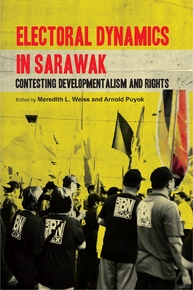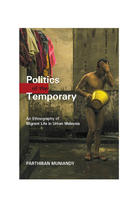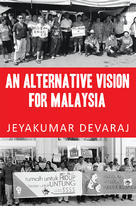Electoral Dynamics in Sarawak
內容簡介
"Based upon observation of the 2016 Sarawak state elections at a time of political turmoil for the ruling Barisan Nasional coalition, Electoral Dynamics in Sarawak offers four ethnographic accounts of grassroots electoral politics in diverse constituencies of Sarawak. Covering Ba’ Kelalan, the rural stronghold of Sarawak Parti Keadilan Rakyat (People’s Justice Party) leader Baru Bian; Tupong, the urban Malay-majority stronghold of the PBB; Stakan, a mixed constituency in which postal votes proved decisive; and Repok and Meradong, rural Chinese majority constituencies caught between the Sarawak United People’s Party and the Democratic Action Party, this volume exposes the diversity and complexity of Sarawak’s electoral geography. Central to the analyses in this volume are not only the role of ethnicity and the urban/rural divide but also the longer term impact of the politics of developmentalism, the personality politics surrounding Chief Minister Adenan Satem and the emerging force of Sarawakian states’ rights enshrined in the Sarawak for Sarawakians (S4S) social movement.
Part of a comparative study of electoral dynamics across Southeast Asia, Electoral Dynamics in Sarawak seeks both to analyse the wider lessons to be learned from the 2016 Sarawak state elections as well as to deepen our knowledge and understanding of a state which is likely to play an especially important role in the political future of Malaysia.
“Covering the constituency level politics of five seats in Sarawak the authors provide rich data on how local factors and issues can largely decide the outcome of elections in a large state like Sarawak. It reminds us that Sarawak is somewhat unique in Malaysian elections and that national concerns are often non-issues when it comes to Sarawak elections.”
Professor James Chin
Director of the Asia Institute, University of Tasmania
“It is becoming increasingly important within Malaysia to understand local political dynamics and the ways in which they impact upon the national distribution of power, especially now that the ruling coalition led by UMNO depends upon the support of Sarawakians to be returned to power. This publication is an important contribution to deepening our understanding of local political dynamics in a Malaysian state.”
Professor Jayum Jawan
Tun Abdul Razak Chair, Ohio University"
Part of a comparative study of electoral dynamics across Southeast Asia, Electoral Dynamics in Sarawak seeks both to analyse the wider lessons to be learned from the 2016 Sarawak state elections as well as to deepen our knowledge and understanding of a state which is likely to play an especially important role in the political future of Malaysia.
“Covering the constituency level politics of five seats in Sarawak the authors provide rich data on how local factors and issues can largely decide the outcome of elections in a large state like Sarawak. It reminds us that Sarawak is somewhat unique in Malaysian elections and that national concerns are often non-issues when it comes to Sarawak elections.”
Professor James Chin
Director of the Asia Institute, University of Tasmania
“It is becoming increasingly important within Malaysia to understand local political dynamics and the ways in which they impact upon the national distribution of power, especially now that the ruling coalition led by UMNO depends upon the support of Sarawakians to be returned to power. This publication is an important contribution to deepening our understanding of local political dynamics in a Malaysian state.”
Professor Jayum Jawan
Tun Abdul Razak Chair, Ohio University"
您可能會喜歡
<
>
同類型熱門書藉
-

-

-

洛克希德事件:...
作者: 春名幹男 -

歷史終結之後:...
作者: 法蘭西斯.福... -

東南亞華僑資料...
作者: 何鳳嬌


 Politics of the Temporary
Politics of the Temporary Anything but the Law
Anything but the Law Malay Ideas on Development
Malay Ideas on Development An Alternative Vision for Malaysia
An Alternative Vision for Malaysia Comet in our Sky
Comet in our Sky Banana Punk Rawk Trails
Banana Punk Rawk Trails
